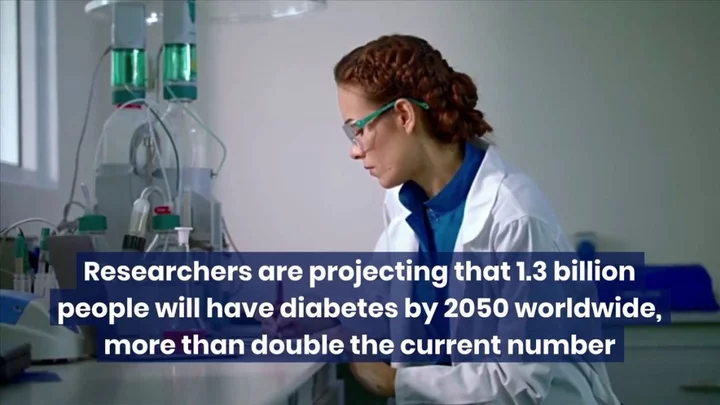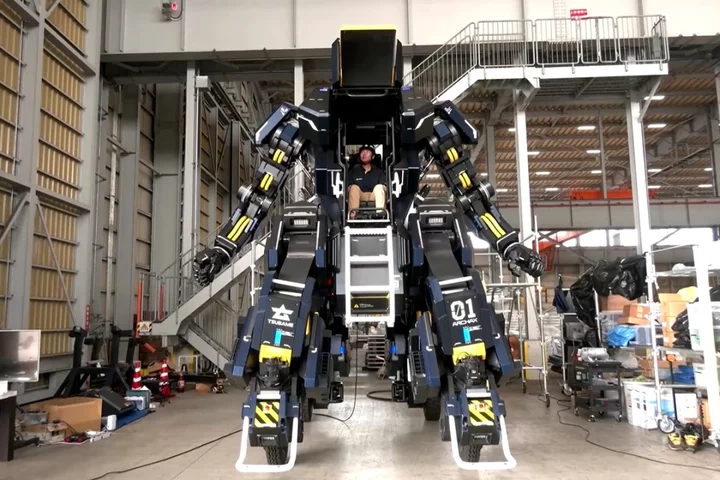
Scientists discover that neanderthals were getting high on psychedelics millions of years ago
Neanderthals liked to unwind after a hard day’s work hunter gathering by consuming psychoactive drugs, a new study has found. A discovery of human hair strands at a burial site in Menorca, Spain has given us evidence of drug use in prehistoric times. Research was put forward in a new study published in the journal Scientific Reports, and they shine new light on drug use throughout history. The findings uncovered a number of different alkaloid substances which came from nightshade plants. They contain scopolamine and atropine which can cause hallucinations and out-of-body experiences, while ephedrine is a stimulant. The cave also contained boxes patterned with psychedelic decorations, which could well have been decorated while neanderthals were under the influence. Elisa Guerra-Doce is an associate professor of Prehistory at the University of Valladolid and lead author of the study. Guerra-Doce told The New York Times: "These findings are so singular. "Sometimes when people think about drugs, they think it's a modern practice. These results tell a different story." Ethnobotanist Giorgio Samorini, who wasn’t involved in the study, also told the publication: "This was not a profane purpose of 'searching for a high' but more generally the search for existential meaning that has been largely lost to time.” Sign up for our free Indy100 weekly newsletter Have your say in our news democracy. Click the upvote icon at the top of the page to help raise this article through the indy100 rankings.
2023-08-18 21:15

Detroit Carmakers Resist Pressure to Pay Up for Battery Workers
One of the more divisive topics putting General Motors Co., Ford Motor Co. and Stellantis NV at risk
2023-08-18 21:15

Little Rock schools will allow African American class to count for graduation, in break from Arkansas state officials
In a sharp break from Arkansas education officials, the Little Rock School District said in a news release it will offer AP African American Studies for credit.
2023-08-18 20:13

JPMorgan Expands $7 Billion ETF Platform With Funds Tied to PAB
The asset management unit of JPMorgan Chase & Co. has launched two new exchange-traded funds tied to Paris-aligned
2023-08-18 19:29

Startups Are Vying to Fix One of Fashion’s Fossil-Fueled Secrets
At a factory in Vietnam, workers load rolls of undyed polyester into a steel container connected to a
2023-08-18 19:00

AI poses a profound threat – but could also help us in a variety of important ways, experts agree
Artificial intelligence poses a major threat to humanity and the world – but also has a range of positive uses, experts have said. Those positive uses include the development of new kinds of life-saving drugs, revolutionary new educational technologies and ways to make media and art more accessible to people. But the potentially liberating and exciting uses of AI risk being overshadowed by the fear and panic over the potential problems of the technology, the experts warned. That was the conclusion of The Independent’s latest premium live event, which saw experts discuss the question: “How much of a threat does AI really pose?” To attempt to answer the question, The Independent’s technology editor, Andrew Griffin, was joined by deputy technology editor Anthony Cuthbertson and two world-recognised experts in their field. Andrew Rogoyski is director of innovation and partnerships at the Surrey Institute for People-Centred AI, and Catherine Breslin is a machine learning scientists and consultant who previously worked on Amazon Alexa and at other companies, and now runs Kingfisher Labs, an artificial intelligence consultancy. All panelists agreed that one of the most pressing issues about artificial intelligence is it being used to fill the internet with “sludge”: “automatically generated noise”, as Rogoyski described it, that could make it difficult to tell humans from artificial intelligence systems. “If you think of how much we depend on information on the internet, the idea that it's filled with rubbish – it's bad enough as it is,” he said. “But the idea that it's automatically generated, I think, is the most real extant threat of the misuse of AI.” Catherine agreed and noted that “sludge” could be made up of not only text but also “images and video and audio as well”, warning that people are not aware of just how easy it is to create convincing audio and video that pretends to be somebody else. “We won't necessarily be able to trust what is real and what is not real and without better ways of validating where images and video and audio come from,” she said. “So I think that this being able to generate media quickly, convincing media quickly, and then being able to send it out on the internet and the speed and scale at which information disseminates there – I think those two things combined will make for interesting times in the future when we have to grapple with the realities of validating our media.” But even amid that fear, the experts said that there were many very exciting possibilities being offered by technology. “Some of the biggest problems humanity faces could potentially be solved by an advanced artificial intelligence,” said Cuthbertson, pointing to its use in medicine and elsewhere. Rogoyski said that many of the benefits of AI are already being “taken for granted”. The technology is already used in science, medicine, to moderate the internet and to improve manufacturing and logistics, he said, and in every day ways such as the organisation of photos on our phones and information in our search engines. Even the fear that people could lose their jobs to artificial intelligence might be misplaced, the experts said, if companies instead use the technology to augment rather than replace their employees. Already, legal professionals are using artificial intelligence to navigate court audio, and doctors are using it to transcribe medical notes – freeing those people up to do helpful work for their clients and patients, Breslin noted. The entire conversation – which included discussions on the military use of artificial intelligence, its effects on the arts, and much more besides – can be viewed above. Read More Google may soon roll out AI ‘personal life coach’ ‘I’m scared’: Snapchat’s AI posts image that terrifies users How much of a threat does AI really pose? Get your ticket for our free event
2023-08-18 18:50

Study finds that divorced diabetic men have higher risk of amputation
Divorced men with diabetes are at the highest risk of having some or all of their feet and legs amputated because of it, research has found. According to a study of almost 67,000 people with diabetes in Sweden, people with the condition who are divorced are 67 per cent more likely to have to undergo a lower limb amputation than those who are married. Meanwhile men are at 57 per cent greater risk than women. On average, 184 people a week in England have some part of a lower limb removed surgically to stop infection spreading and killing them. Lasantha Wijesinghe, a consultant vascular surgeon in England who performs lower limb amputations, said they were usually necessary because the person’s life was at risk because of sepsis. The authors of the study, which has not been peer-reviewed yet, said they could not be sure why divorcees of both sexes ran such a greater risk than married people, but speculated that this “may be due to a change in self-care and food habits observed in people when they divorce and are more likely to be living alone”. “Specifically with men, this is often related to more social isolation, with a secondary effect of low physical activity,” they added. Older people are also at higher risk of an amputation and patients who are on insulin treatment, have a pre-existing foot condition such as neuropathy or who smoke are also at higher risk. The study also concluded that obese people have a lower risk than those with a standard weight. The authors could not explain this finding but suggested it could be down to chance. Dr Faye Riley, the research communications manager at Diabetes UK, said: “This study identifies a range of factors that may be linked with a higher risk of amputation among people with diabetes, and raises interesting questions about how social support can influence our health behaviours and outcomes. By pinpointing which people with diabetes are most at risk, support can be targeted where it’s most needed.” Sign up to our free Indy100 weekly newsletter Have your say in our news democracy. Click the upvote icon at the top of the page to help raise this article through the indy100 rankings.
2023-08-18 18:28

Zimbabwe Publishes Regulations for Carbon-Credit Projects
Zimbabwe will allow developers of carbon credits to keep as much as 70% of the proceeds for the
2023-08-18 17:02

Get a refurbished Dell laptop for only $138
TL;DR: As of Aug. 18, you can snag a refurbished Dell Latitude E5450 (Core i5,
2023-08-18 17:00

WhatsApp now lets you share photos in glorious HD
WhatsApp just launched a feature that was on many users' wish lists: the ability to
2023-08-18 16:56

Most of Europe Poised for Cooler Temperatures by Next Weekend
The heat wave that’s gripped parts of the continent is set to give way to cooler weather in
2023-08-18 16:02

How BlackRock May Clear the Way for Spot-Bitcoin ETFs
Crypto fanatics have been pining for a Bitcoin exchange-traded fund for a decade now. But as the applications
2023-08-18 16:00
You Might Like...

Georgia Professor Begins Term as 2023–2024 President of the National Science Teaching Association

China Military’s Use of AI Raises Alarm for Congress, Ex-Google CEO

After secret documents leak, Pentagon plans tighter controls to protect classified information

Artificial intelligence threatens extinction, experts say in new warning

Nepali sherpa becomes world’s second person to scale Everest 26 times

Japan startup unveils 15-foot robot suit for space exploration

The solution to Twitter's downfall isn't five Twitter clones

US Navy Hit by Chinese Hacking Campaign, Report Says
